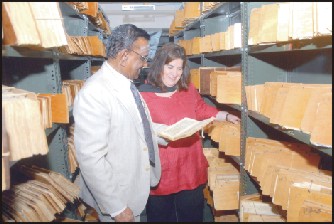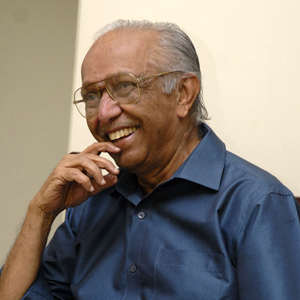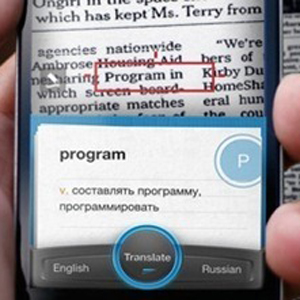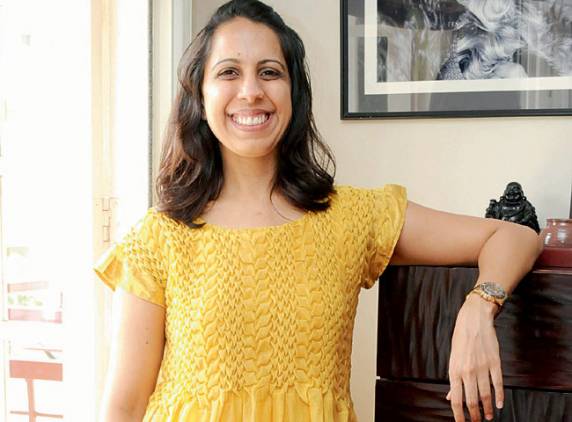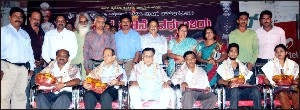The 4O-year-old widow who had studied up to Std VIII is now in the final year BA and wants to learn to ride an autorickshaw, so that she can take her spastic daughter to college every day without any problem

Forty-year-old Shashi has struggled hard to bring up her 17-year-old spastic daughter Vaishnavi. Besides working hard for a living, the single mother who had studied only up to Class VIII, even attended evening school so that she could teach her daughter in the morning. Today, the mother-daughter duo are doing their graduation together and both aspire to become lecturers.
Vaishnavi was born in Udupi. At the time of birth she was a healthy baby, but within a week’s time, lost weight and had no strength in her hands and legs. At that time, her parents lived in Bangalore, where the father ran a business. “Doctors at Nimhans said there was no cure for the disorder. Yet, we kept trying with oils and massages. Till she was eight years old, I used to carry her,” said Shashi.
Vaishnavi was also diagnosed with a hole in her heart. “The operation would have cost Rs 2 lakh, so we took her to Puttaparthi, where free treatment was provided. Luckily the operation was successful,” said Shashi.
“Eight years passed by. A friend suggested that I recite a prayer everyday to my daughter. I would make my daughter sit on the bed with pillows around and read out the prayer. One day she just stood up and tried to walk. That was the only development till date. Sadly her father was not with us to see her walk,” she said.
After the death of her husband, Shashi moved with her daughter to Mangalore with her life’s savings of about Rs 2 lakh and bought a small flat in Shaktinagar for Rs 1.75 lakh. It was from here that the most difficult part of her life began. She had no income and with her education, getting a job was tough.
A friend advised Shashi to take the test for insurance agents. “The study material gave me a shock as I knew very little English. But I took up the challenge for my daughter’s sake. Though I did not understand anything, I mugged up the questions and answers. I cleared the exam.”
Shashi locks her daughter inside the house when she goes out. “I am used to it. I wait for my mother to come back to have lunch because I can pick up and eat only what she leaves on the floor or table,” said Vaishnavi.
After Vaishnavi turned 14, she too wanted to go to school. “I visited several schools for admission. While schools for the differently abled turned her away saying that they were for mentally challenged children, others said Vaishnavi won’t be able to adjust with normal children.”
“It was then I heard about St Aloysius night school where classes are held from 5.30 pm to 9 pm. The principal was very encouraging.
He said my daughter needed to attend classes everyday, otherwise she would fall short of attendance. That was not possible, so I told them that I could attend the class and then go back and teach her at home. The headmaster, Praveen Hridayaraj, agreed. I found it really tough in the beginning. But I did not give up. If I gave up, my daughter would never study,” Shashi said.
In 2009, both the mother and daughter passed SSLC with good marks and decided to go to college. “Considering my age, the college asked me to go for II PUC directly, while my daughter was admitted to I PUC. Financially we were struggling. St Aloysius College helped by not charging fees till date,” Shashi said.
Shashi is now studying in final year BA and her daughter is in the second year. The college provides them auto fare. “Convincing autorickshaw drivers is a big challenge. So I want to learn to ride an auto so that I can drive my daughter to college if I manage to arrange for funds and buy an auto,” Shashi said. She can be contacted over ph: 7204651798.
source: http://www.bangaloremirror.com / Home> News> City> Story / Bangalore Mirror / by Deepthi Shridhar in Mangalore / Sunday, May 27th, 2012
